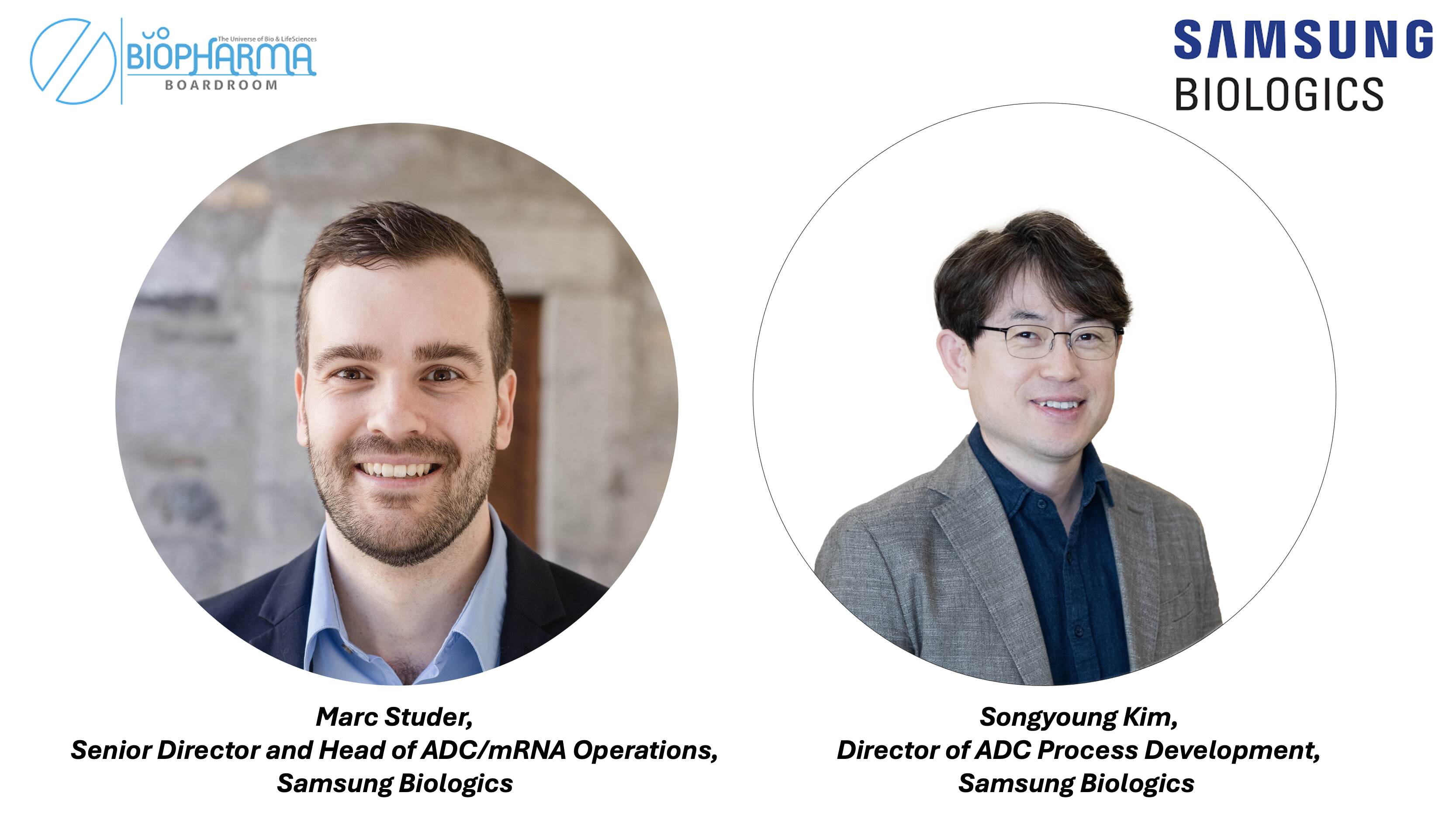16 June 2025 | Monday | Expert Opinion | By Marc Studer and Songyoung Kim

ADCs are no longer a niche modality. To date, there are over a dozen approved ADCs on the market, and more than 500 programs are in clinical development, driving the global market past $11 billion in 2023 and toward a projected compound annual growth rate of over 9% through the next decade.
ADCs are complex compounds containing three interdependent components—an antibody, a linker, and a highly potent payload. The development of each component requires specific expertise, individual supply chains, analytical toolkits, adaptable facilities and equipment for handling payloads, component-specific process optimization, and distinct regulatory support. As a result, biopharmaceutical companies have increasingly partnered with contract development and manufacturing organizations (CDMOs) that hold the capabilities to manage monoclonal antibody (mAb) production, as well as cytotoxic payload handling, conjugation, and highly specialized analytics.
Emerging innovations—from multi-payload ADCs to next-generation enzymatic and site-specific conjugation technologies—increase therapeutic precision and potency but expose a structural limitation. Siloed CMC teams often lack the agility and coordination required to develop and manufacture these molecules at the right pace and to specifications.
Three realities highlight the need for a new operating model:
End-to-end CMC integration—uniting antibody production, linker-payload management, conjugation, fill-finish, and analytics within a single quality-by-design (QbD) framework—is now the standard model for CDMOs engaged in ADC development and manufacturing.
This article outlines a blueprint for CDMOs to optimize ADC workflows, prepare their operations for next-generation biologics, and stay competitive in an evolving market.
The integrated CMC model: Unifying the ADC–CMC triad
Conventional biologics manufacturing lines handle upstream cell culture, downstream purification, and drug product (DP) formulation as discrete stages. Each transfer adds scheduling time, duplicates documentation, and may contribute to the variability of the end product—an inefficiency further increased for ADCs for which each component, from mAb to drug substance (DS) and DP, requires distinct chemistries, analytical protocols, and specific regulatory requirements.
Leading operators are now integrating these stages into a single design space that manages the antibody, linker-payload, and conjugation streams as a unified workflow across development labs and GMP manufacturing suites rather than as three transfers. Teams run cell line optimization, antibody intermediate process development, linker-payload intermediate process development, ADC DP formulation, analytical method development, and conjugation ratio studies in parallel on proven, scalable pilot-to-production equipment, comparing every experiment to a common set of critical quality attributes: drug-to-antibody ratios (DARs), aggregates, and free drug-related impurities. Closed-loop protocols, centralized data repositories, and integrated multivariate control strategies translate parallel workflows into production-ready operations.
CDMOs that run the antibody, linker-payload, and conjugation steps as one integrated process can optimize processes and advance newer, more complex ADC formats to production faster and with less risk.
Speed through concurrency
In an ADC plant, the primary reaction—attachment of the linker-payload to the antibody—rarely limits throughput; the job is done in minutes. The primary schedule bottlenecks are preparatory: thawing bulk monoclonal material, purifying materials staging consumables, cleaning, and awaiting conditional quality control release. Adhering to line clearance, process engineers physically segregate unit operations, such as thawing, preparing mAbs, and freezing, from the main conjugation room to initiate the next batch production while the current batch is still undergoing downstream purification or final fill. The payoff is that the production line spends a greater proportion of its available time making the product (conjugation, purification, and fill-finish) rather than sitting idle while the next batch’s material is thawed or purified.
The essential metrics are no longer liters of reactor volume or batch scale but the percentage of line utilization. This parallel approach must be supported by rigorous, unified supply chain management for the timely delivery of mAbs, linkers, toxins, and other critical consumables. Nevertheless, organizations running concurrent operations can save weeks in manufacturing timelines, maximize output from existing assets, and accelerate ADC DS processes without additional manufacturing capabilities.
Concurrency makes manufacturing speed a scheduling variable rather than a capacity constraint. CDMOs that master process overlap will set timeline standards for the industry by increasing throughput and bringing more products to market.
Supply chain coordination in an integrated site
ADC projects rarely proceed along a strictly linear sequence and often require coordination across a multi-node supply chain. Even with well-defined processes, biopharmaceutical companies must procure the antibody, linker-payload, and other critical consumables, complicating timelines. Therefore, the supply chain must be established early to accelerate market entry.
This complexity underscores the benefits of integrated one-stop-shop CDMOs. Colocation of antibody, linker-payload, and conjugation capabilities reduces shipping time and the risks related to transport. Yet, the real strength of the one-stop-shop approach lies in a company’s ability to coordinate multiple supply nodes into an aligned process under central oversight. Best practices integrate program management for master scheduling and logistics across antibody, linker, payload, and DP activities, ensuring that any amendment to incoming raw materials is assessed for impact on downstream stages before approval.
Digital platforms for supply chain management further strengthen this oversight by integrating vendor-managed inventory and real-time shipment tracking into a unified dashboard. The result is a geographically distributed network that functions as an integrated facility.
The integrated program management that shares a digital system for scheduling, inventory, and shipment tracking turns a geographically distributed supply chain into a single, coordinated operation when a single-site strategy is not available.
A look to the future: Preparing for next-generation ADCs
With ever more complex bioconjugates, ADCs’ structural and functional profile is evolving: variable DARs, bispecific and dual-payload ADCs, bio-orthogonal conjugation chemistries, and hybrid constructs that attach RNA fragments or peptides to mAb backbones. Each additional binding arm or payload type narrows process windows, heightens impurity risks, and calls for tighter coordination across antibody supply, payload stewardship, and high-containment operations. However, addressing these demands will require biopharmaceutical companies to manage CMC as an integrated end-to-end process rather than a separate step. Facilities operating modular suites and harmonized raw material protocols under an integrated framework will be ideally placed to incorporate new bioconjugate formats into existing control strategies without major retrofitting.
Strategic priorities should include establishing high-level platform conjugation processes that provide clients with a standardized template for handling diverse ADC constructs. An equally critical element for clients is the selection of a CDMO partner with technology offerings that match the specific demands of the client’s ADC products. Biopharmaceutical companies that vet a partner’s specific expertise early in the program are likely to gain more agility and resilience than they would from capacity or geographic proximity alone.
While the trend toward increasingly complex ADCs and biologics is clear, the market’s precise evolution remains unpredictable. For CDMOs, future-proofing, therefore, requires a commitment to modularity and an acknowledgment that new and emerging ADCs will require today’s facilities to adapt without significant reconfiguration.
Accelerating first-in-human: Three CDMO must-haves
Deep CMC integration—based on parallel process execution, supply chain orchestration, data-driven QbD, and a proactive safety framework—allows CDMOs to compress timelines and uphold quality despite the increased complexity of ADCs and other targeted therapies.
To convert this end-to-end model into a rapid first-in-human transition for biopharmaceutical companies, CDMOs must establish three operational capabilities:
A single-platform CDMO that combines consistent technology transfer, unified programs, and quality management with integrated clinical support provides a framework that biopharmaceutical companies need to more rapidly move complex ADCs from development to first-in-human dosing.
Conclusion: Integrate or lag behind
In the current wave of ADC innovation, organizations that integrate all CMC activities into one continuous workflow secure a strong competitive position. Integrated workflows remove departmental interfaces and delays during hand-off, parallelized tasks shorten timelines, and robust program governance aligns multiple suppliers in a single managed network.
As product formats become more complex and regulatory scrutiny intensifies, the performance gap between integrated and siloed models will widen. CDMOs that adopt integration will set future operating standards for ADCs and other modalities, giving them a measurable market advantage and ensuring that targeted therapies reach patients consistently, safely, and on schedule.


© 2025 Biopharma Boardroom. All Rights Reserved.